|
Highlights of Uluru (Ayers Rock)
March 10, after taking off from Kangaroo Island our Emu pilot announced that she was
not pleased with the sound of the engine so we quickly returned to land and switched
planes. (I was not looking forward to a water landing off the coast of Australia.) Drew
met our delayed flight and whisked us off to the Adelaide airport. Our flights from
Adelaide to Alice Springs and then on to Ayers Rock were quite a contrast. We had
reentered civilization and tour groups surrounded us. Also the landscape had changed
significantly, we were now in my type of country - desert.
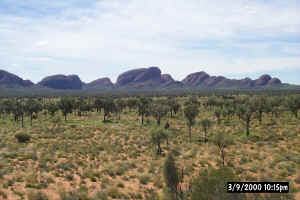 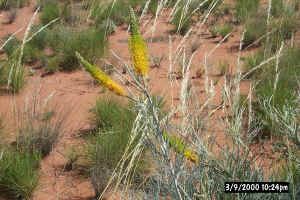
We were met at the airport by the Uluru Experience Company and were taken to the Outback
Pioneer Lodge. All the accommodations for the park are consolidated into a service
village known as Yulara. Here there are a variety of hotels, camping facilities as
well as restaurants, stores, bank, post office and shops.
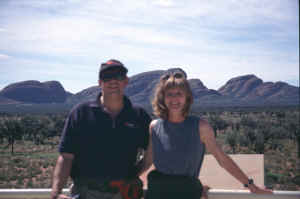 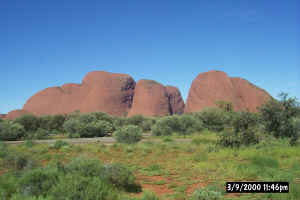
Situated in the Northern Territory and the heart of Australia, the Uluru-Kata Tjuta
National Park, whose land is owned by the Anangu (local Aboriginal) people, leased to the
government and operated by a board consisting of aboriginals, naturalists and
representatives of the Australian government is Australia's natural wonder. After dumping
our bags, we took off for an afternoon tour of Kata Tjuta (The Olgas). The Kata
Tjuta monoliths are west of Uluru, smaller than Uluru and consist of "many
heads". It was a cloudless blue sky day perfect for hiking into the Olga Gorge.
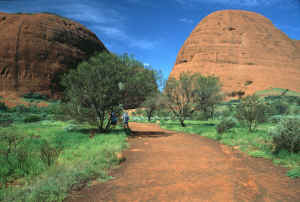 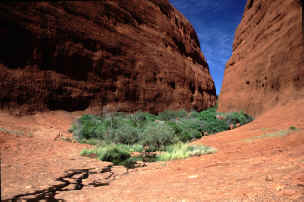
That evening we had the 'Sounds of Silence' dinner in the desert. We watched a colorful
sunset while listening to dijeridus music, munching on hors d'oeuvres and sipping a
glass of wine. As the sun set we were treated to a great dinner of emu, racoon,
kangaroo, etc and later a star lecture emphasizing the orientation of the southern
hemisphere skies.
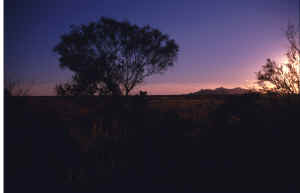 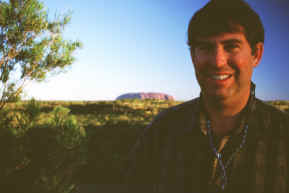
The desert's most spectacular moments are sunset and sunrise. We went to bed early
so that we would be able get up and see the sunrise at Uluru, a most sacred place for the
Anangu people. The solitary rock is 348m tall and is believed that 2/3 of the Rock
remains beneath the surface. We did a 6 mile, 3 hour base walk around Uluru
accompanied by a guide, Steve, from Uluru Experience. Steve provided the cultural
context and significance of the different areas around the base of the Rock. The
Aboriginal people use stories to express their historical memories and Uluru has many
events and stories attributed to it.
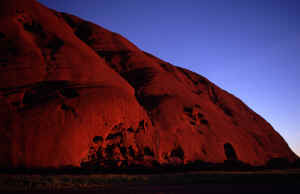 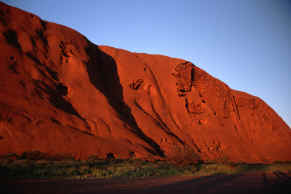
The spaces created by the Rock and the interplay of light was amazing. Although there is
an area in which tourists are allowed to climb up the Rock (chain handrail), it is said
that the people do not wish such activity since the Rock is a sacred place. Also
sacred areas are now either off-limits or can not be photographed which was not the case
ten years ago.
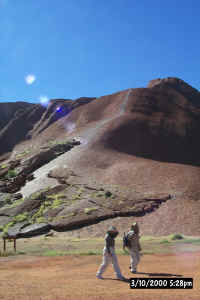 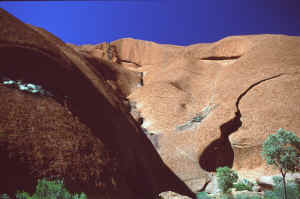
After lunch we were glad to escape the touristy atmosphere of Uluru and fly out to Alice
Springs for several days on a cattle ranch, Deep Well, adjacent to
the MacDonnell Ranges.
|